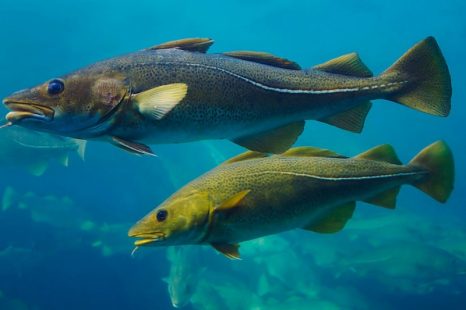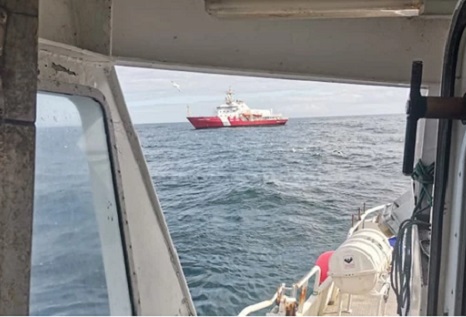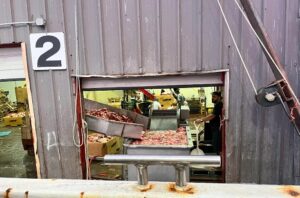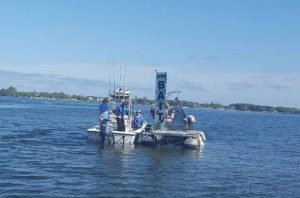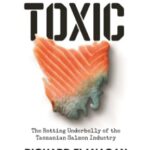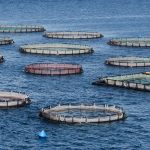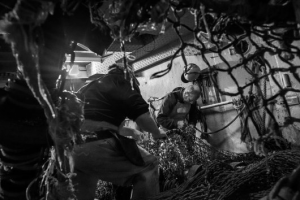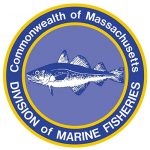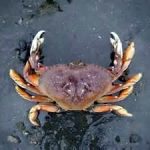Tag Archives: cod
Kirkella aims to take Flemish Cap quota in one trip
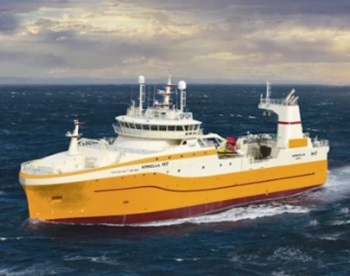 The UK’s last remaining distant waters trawler, the 81-metre Kirkella operated by UK Fisheries, is fishing on Flemish Cap, providing a British presence on these fishing grounds for the first time since 2916 – when the previous vessel to carry the same name worked there. Kirkella’s skipper Sigurbjörn Sigurðsson hopes to complete the trip on the grounds 300 nautical miles south of Newfoundland by the end of May. He and Kirkella’s mainly British crew are hoping to take their 1090-tonne NAFO cod quota before heading back to Svalbard. More, >>CLICK TO READ<< 19:50
The UK’s last remaining distant waters trawler, the 81-metre Kirkella operated by UK Fisheries, is fishing on Flemish Cap, providing a British presence on these fishing grounds for the first time since 2916 – when the previous vessel to carry the same name worked there. Kirkella’s skipper Sigurbjörn Sigurðsson hopes to complete the trip on the grounds 300 nautical miles south of Newfoundland by the end of May. He and Kirkella’s mainly British crew are hoping to take their 1090-tonne NAFO cod quota before heading back to Svalbard. More, >>CLICK TO READ<< 19:50
What You Need to Know About Cod
As a large, naturally abundant fish, cod has been eaten by various human populations for centuries. 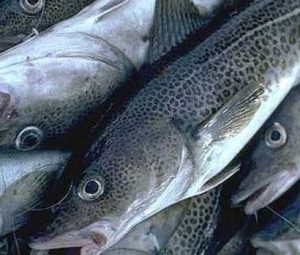 While both of America’s Atlantic cod fisheries are overfished, American stocks of Pacific cod (Gadus macrocephalus) are not. What’s more, various other cod fisheries are located around the globe, some over-exploited, others not. The fish’s prevalence, along with its suitability for eating, means that despite dwindling numbers, cod remains a stalwart of many cuisines. However, there are many things about cod that aren’t widely known. It might surprise some people to learn that cod hunt for prey. They eat a variety of animals, ranging from worms to lobsters and even small fish. Such a diet means cod are capable of growing up to an impressive length of six feet and a weight of over 100 pounds. more, >>click to read<< 11:52
While both of America’s Atlantic cod fisheries are overfished, American stocks of Pacific cod (Gadus macrocephalus) are not. What’s more, various other cod fisheries are located around the globe, some over-exploited, others not. The fish’s prevalence, along with its suitability for eating, means that despite dwindling numbers, cod remains a stalwart of many cuisines. However, there are many things about cod that aren’t widely known. It might surprise some people to learn that cod hunt for prey. They eat a variety of animals, ranging from worms to lobsters and even small fish. Such a diet means cod are capable of growing up to an impressive length of six feet and a weight of over 100 pounds. more, >>click to read<< 11:52
Commercial Cod Harvesters Opposed to Drastic Increases in Rec. Fishery
 Commercial fish harvesters in Newfoundland and Labrador are calling for stricter monitoring of the recreational cod fishery in the province and assert that unaccounted for removals in the recreational fishery could threaten the conservation integrity of the stock. The petition to the federal government supported by Conservative MP Clifford Small is to more than double the number of days in the recreational fishery from 39 to roughly 90. Recreational removals are a significant source of uncertainty in DFO science and management and is blatantly contradictory to the Department’s mandate to monitor fish landings. more, >>click to read<< 14:04
Commercial fish harvesters in Newfoundland and Labrador are calling for stricter monitoring of the recreational cod fishery in the province and assert that unaccounted for removals in the recreational fishery could threaten the conservation integrity of the stock. The petition to the federal government supported by Conservative MP Clifford Small is to more than double the number of days in the recreational fishery from 39 to roughly 90. Recreational removals are a significant source of uncertainty in DFO science and management and is blatantly contradictory to the Department’s mandate to monitor fish landings. more, >>click to read<< 14:04
Fishing deals said to have netted £393 million for Scots’ fleet
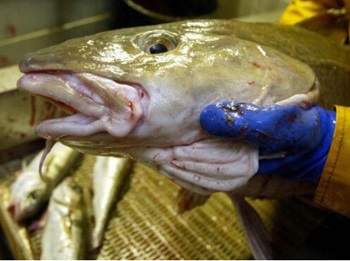 A trilateral agreement between the UK, European Union and Norway covers the total allowable catch (TAC) limits and management measures for jointly managed stocks in the Nort Sea. It has delivered quota increases for all six stocks – cod, haddock, whiting, plaice, saithe and herring. These are said to be worth an estimated £199m for Scots’ fishers, an increase of £68m compared to 2023 quotas. The government said this deal reflected positive advice from the International Council for the Exploration of the Sea, an influential group of marine scientists. It has delivered quota increases for all six stocks – cod, haddock, whiting, plaice, saithe and herring. Photos, more, >>click to read<< 14::56
A trilateral agreement between the UK, European Union and Norway covers the total allowable catch (TAC) limits and management measures for jointly managed stocks in the Nort Sea. It has delivered quota increases for all six stocks – cod, haddock, whiting, plaice, saithe and herring. These are said to be worth an estimated £199m for Scots’ fishers, an increase of £68m compared to 2023 quotas. The government said this deal reflected positive advice from the International Council for the Exploration of the Sea, an influential group of marine scientists. It has delivered quota increases for all six stocks – cod, haddock, whiting, plaice, saithe and herring. Photos, more, >>click to read<< 14::56
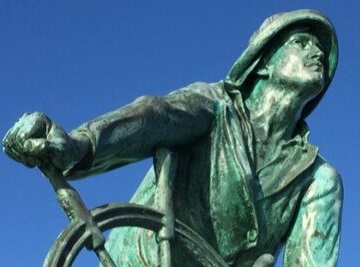
Cod: The New England Council has proposed a plan to restore cod by 2033
What that will mean is our fishing fleet would have to reduce their catch by whatever the council thinks will be helpful. Over the years NOAA has made reductions on cod and other species, based on their studies and science. Under law, they do not have to compare their findings. We need to update the Magnuson–Stevens Act that would require them to compare data before making restrictions on species of fish. Put this aside, if we want to bring back the cod, no fishing vessel can land cod over the next ten years. Great! So be it. Pay our fisherman to not catch cod. Farmers have a Farm Bill and pay farmers not to grow certain crops. So why can’t our government create a Fish Bill to do the same for the U.S. fishing industry? This could be paid for by increasing the duty on imported fish. This is a Win-Win solution. Sam Parisi, Gloucester, Mass. 19:27
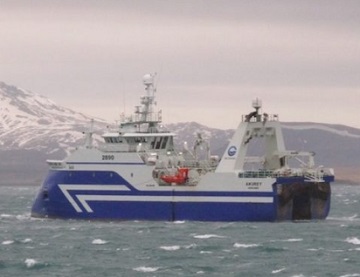
Twin-rigging yields results
Brim’s fresher trawler F/V Akurey is fishing now on the Hali grounds and according to skipper Jón Frímann Eiríksson, they were a few days into the trip before the weather improved enough to work both trawls. ‘To start with there wasn’t weather for fishing, practically blowing a storm, but it’s dropped away now. Today it’s been fine. We’ve been able to tow two trawls all day and fishing has been good,’ he said, and estimated that the catch so far is around 80 tonnes. The bulk of the catch is cod, plus some other species such as saithe. >click to read< 09:24

Icelandic trawler caught one hundred tons of cod in just 48 hours
It was Brim’s trawler “Akurey” that sailed west along the south coast of Iceland after a successful trip to the fishing grounds east of Iceland. According to skipper Eiríkur Jónsson, the catch is around 105 tonnes after almost two days of effective fishing. “We went east from Thorlákshöfn, where we landed last time, and sailed on to the first tow on Wednesday morning. The final move was on deck at five o’clock this morning. These are all fine cod, and I’m guessing that the average weight is about three kilos each,” says the skipper, >click to read< 15:31
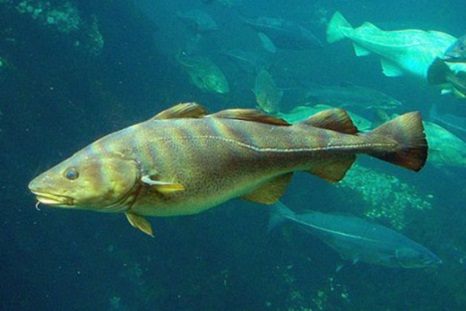
Ocean Industrialization: Fishing regulators fear wind turbines could threaten spawning area for Atlantic cod
It is the largest offshore HAPC designation in the region. Yet a main concern is cod spawning grounds in a smaller region within the designation, just east of Block Island. That area, known as Cox Ledge, overlaps with some 250 square miles currently leased to developers Ørsted and Eversource for their joint wind energy project: South Fork Wind. It is one of only two offshore wind projects that have completed the federal permitting process. “We are really going about the wind farm development very quickly,” said Kevin Stokesbury, a fisheries science professor at UMass Dartmouth, who studies cod in the Gulf of Maine. “It’s going to be quite a dramatic change to the ecosystem out there.” “We’ve all made sacrifices so cod can recover,” said Capt. Tim Rider, who fishes for groundfish and scallops. “Now they’re going to put a wind farm there,” he said of the cod spawning grounds. “How about they put it somewhere that might not be as intrusive.” >click to read< 11:05

An open invitation to the public – Event to mark the 30th anniversary of northern cod moratorium
An event to mark the 30th anniversary of the announced shutdown of Newfoundland and Labrador’s most iconic fishery is scheduled for next week, with an open invitation to the public to support and share in the historic milestone. “The impact of the moratorium has had a deep and profound impact on the province’s psyche, culture, and economy,” says Ryan Cleary, one of the organizers of the non-partisan event — Moratorium Story, Northern Cod 30 Years On. “It must be recognized for the good of past and future generations.” The event is scheduled for Thursday, June 30th, 1:30 p.m.-3:30 p.m., in Salon B at the Delta Hotel in downtown St. John’s, the same room where the late John Crosbie, then-federal minister of Fisheries and Oceans, made the announcement on July 2, 1992. >Details, click to read< 14:14
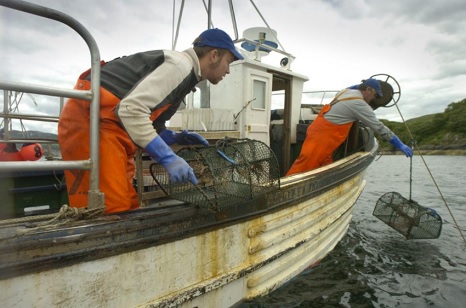
Firth of Clyde: Fishermen hit out at new measures aimed at protecting cod stocks
Exemptions allowing langoustine trawlers, creels and scallop dredgers to use the area during spawning season will be ended. The Clyde Fishermen’s Association says the move will have “a horrific impact”, but the government says it needs to act now to protect cod stocks. For 20 years, measures to protect spawning cod in the Firth of Clyde have been in place through an annual 11-week closure between February 14 and April 30. >click to read< 10:20

Iceland: Coastal Fishermen Unhappy With Reduced Cod Quota
Small boat fishermen in Iceland are unhappy with the government’s decision to reduce their cod fishing quota from 10,000 tonnes down to 8,500 for the coming summer season, Last year a total of 670 fishermen held coastal fishing licences. “Certain politicians predicted [coastal fishing] would explode. However, since the current system was implemented, the number of fishermen has fluctuated between 600 and 726. “While handline fishing is romantic, there’s a lot of hard work and sweat and tears mixed in with the romance,” >click to read< 08:55
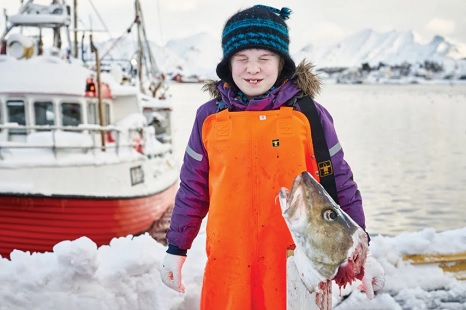
Norway: Kids Slice Out Cod Tongues for Serious Money
For as long as anybody can remember, tungeskjaererne have been responsible for the local cod tongue trade, even as fish factories give up the money they would otherwise get from the tongues by donating the fish heads to children and teenagers. The tradition introduces young people to the fishing industry and teaching them the value of entrepreneurship and hard work seems to matter more than making an extra kroner or two.The job makes selling Girl Scout cookies or running a lemonade stand look like child’s play. Arctander knows tungeskjaererne who have made more than $11,000 in a single season. “I haven’t thought of anything else in the world where kids can make so much money,”,,, >click to read< 08:34
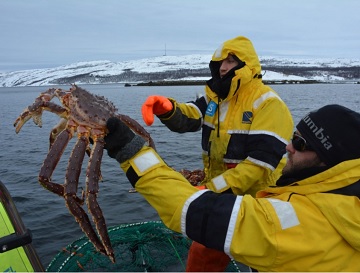
All-time high for Norwegian seafood
“2021 was another exciting export year for Norwegian seafood. We are in the very favorable position of having products in high demand the world over, even in times of crisis. This has resulted in a growth in demand, record export volumes and a total export value that Norway has never experienced before,” says Renate Larsen, CEO of the Norwegian Seafood Council. Cod is still the most important fish, One of the most exotic species from the north is the king crab. “The abolition of the quota for red king crab in Alaska combined with increased demand in Asia, the USA and Europe has led to the demand for king crab being greater than the supply,,, >click to read< 10:30
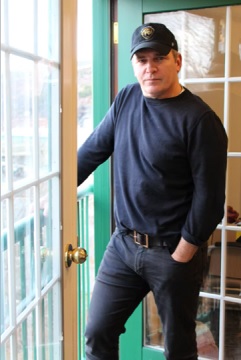
DFO responds to Ryan Cleary’s allegations of a ‘backroom’ plan
The interim executive director of Seaward Enterprises Association of Newfoundland and Labrador accused the Department of Fisheries and Oceans of orchestrating a “backroom” plan to rebuild the cod stock off southern Newfoundland and exclude the voice of inshore harvesters. According to Cleary, DFO has assembled a working group, made up of DFO and FFAW union officials, fish processors, indigenous interests and the offshore, sector to develop a rebuilding plan for cod in the 3Ps fishing zone. An official for DFO, however, says when DFO established the working group they invited members of the 3Ps Groundfish Advisory Committee to participate. >click to read< 13:32

SEA-NL condemns DFO’s backroom plans for rebuilding south coast cod stock
Seaward Enterprises Association of Newfoundland and Labrador (SEA-NL) accuses Fisheries and Oceans of orchestrating a “backroom” plan to rebuild the cod stock off southern Newfoundland and exclude the voice of inshore harvesters. “Any rebuilding attempt that does not include the input of the inshore fleet is doomed,” says Ryan Cleary, SEA-NL’s interim Executive Director. “When DFO leaves inshore harvesters out of the equation they get the math and science wrong, and the department is doing it again.” >click to read< 10:37

Federal Liberals continue to destroy BC fisheries… it’s starting to look like the NFLD fishing moratorium
There are about 2,000 licensed commercial fishing licenses held by BC fishermen (pc governments now call them harvesters). Using that figure and adding in 2 crewmen (many fishing boats have more) means over 2,500 harvesters will lose their jobs… The sad part is that reducing the wild salmon fishery has its precedence on the east coast. Some might remember back in 1992, the federal government of the day established the Newfoundland 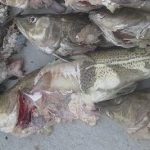 cod fishery moratorium. It was a cruel and duplicitous statement to call it a moratorium as 30 years later, and the commercial cod fishery remains closed. Cod have considerably recovered but are being caught by fisherman from Iceland, Greenland, Denmark, and a swarm of foreign-flagged fish factory trawlers just outside the 200-mile nautical limit. Codfish are also being consumed by a 5 million strong seal herd, which has quadrupled in size since the collapse of the seal fishery. >click to read< 18:38
cod fishery moratorium. It was a cruel and duplicitous statement to call it a moratorium as 30 years later, and the commercial cod fishery remains closed. Cod have considerably recovered but are being caught by fisherman from Iceland, Greenland, Denmark, and a swarm of foreign-flagged fish factory trawlers just outside the 200-mile nautical limit. Codfish are also being consumed by a 5 million strong seal herd, which has quadrupled in size since the collapse of the seal fishery. >click to read< 18:38
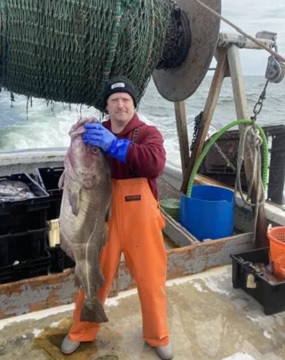
Doomed to Extinction? Where have all the codfish in the Gulf of Maine gone?!!
The commercial fishermen have all been given a personal quota for cod. If they reach their quota, they need to purchase or lease more quota from someone who has extra. The price to “lease” these fish in order to catch them can be exorbitant. Cod has become a commodity on the market being bought or hoarded by non-fishermen to make money off the backs of the active fishermen,,, And then there are the seals. Yes, harbor seals, gray seals and harp seals. Seals would not normally be feeding on large amounts of cod, but we have protected the seal population for decades without regard to the rest of the environment. The result is unmistakably a huge explosion in the seal population within the Gulf of Maine. So, are the cod doomed to extinction? >click to read< 07:50
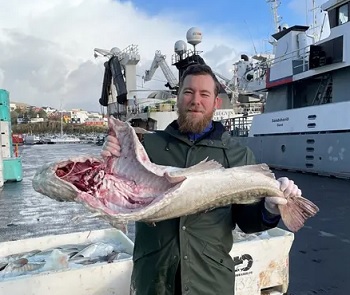
The Faroe Bank Cod: How a ‘mythical’ Faroes delicacy has vanished
The head chef at Barbara Fish House, one of four restaurants located in tiny wooden houses in Tórshavn, the Faroe Islands’ capital, Christensen was hosting what has become known as a “Bank evening”, because of the main dish. The Faroe Bank cod’s reputation is partly built on its size. It is huge: a three-year-old specimen is already twice as large, on average, as the Atlantic cod. But it is also legendary because of its rarity. A genetically distinctive member of the cod family, it was once plentiful before being nearly fished to extinction. In 2008, all commercial fishing of Faroe Bank cod was banned. Only the Faroe Marine Research Institute (Famri) is now allowed to catch them, when its researchers survey the fish population twice a year. >click to read< 11:05

How Newfoundland’s wild fisheries have gone from plentiful to pitiful – How did we get here?
The headline in the daily paper at the end of January 2019 had said it all: Cod recovery still far off: DFO. In the case of cod, the same factors that had contributed to a hopeful comeback — thriving capelin and warming waters — had since swung in unfavourable directions. Fewer capelin prey and changing environmental conditions did not bode well for cod. Now, in 2021, the prognosis for the cod population, capelin and the environmental 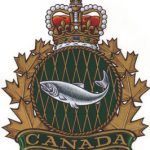 conditions remains no better. How did we get here? DFO science shows several factors are predominantly to blame for declining cod and capelin populations, including: natural causes, especially lack of capelin prey in the case of cod; high predation, particularly from fish (more so than seals), in the case of capelin; and warming ocean waters, among other environmental factors. >click to read< 08:26
conditions remains no better. How did we get here? DFO science shows several factors are predominantly to blame for declining cod and capelin populations, including: natural causes, especially lack of capelin prey in the case of cod; high predation, particularly from fish (more so than seals), in the case of capelin; and warming ocean waters, among other environmental factors. >click to read< 08:26

“DFO operates in denial of Reality”- Scientist says seal predation not having a significant impact on spawning cod stocks
Instead, Karen Dwyer, weighing in on the contentious debate over the health of cod stocks, said Thursday that environmental factors and a limited supply of the cod’s primary food source — capelin — are more to blame.,, Trinity Bay fisherman Keith Smith said DFO continues to downplay the impact of seal predation on cod. “It’s like DFO operate in denial of reality,” Smith said. “Fishing mortality is at an all-time low while natural mortality, likely led by the growing seal population that consumes vast amounts of both capelin and cod, remains high,”,,, >click to read< 11:04

Nearly 30 years into the moratorium, Newfoundlanders look for ways to rebuild Cod
Atlantic cod, the species better known by its population name, Northern cod, is the fish of choice for Newfoundlanders and Labradorians. On a day spent handlining cod on the North Atlantic off of Petty Harbour-Maddox Cove, a centuries-old fishing community just outside of St. John’s, it can be easy to forget cod has a storied history – and a still uncertain future. Northern cod survived near-decimation from overfishing three decades ago, leading the federal department of Fisheries and Oceans Canada (DFO) to shutter the commercial cod fishery in 1992. Meant to last two years, the cod moratorium remains in effect, although DFO reopened an inshore commercial fishery, called the “stewardship fishery,” in 2006. >click to read< 11:00
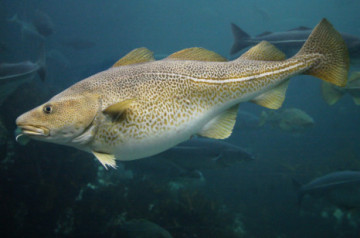
Icelandic Cod Spray Bodes Well Against Coronavirus
While several countries across the globe are vying to create a vaccine against COVID-19, Iceland, a nation of fishermen, has come up with a possible solution of its own. PreCold, a mouth spray intended to be used against the first symptoms of a cold based on cod enzymes, has proven efficient during tests and managed to deactivate about 98.3% of the virus that causes COVID-19, national broadcaster RÚV reported. The spray creates a protective film in the pharynx where the viruses that cause the common cold tend to localise and replicate. The film using enzymes extracted from cod offal, weakens viruses so they fail to replicate to a degree that makes the host sick. >click to read< 07:27
Inadequate Assessment by DFO Leaves Harvesters with Rollover for 2020 Cod Catch Limits
The Department of Fisheries and Oceans (DFO) announced the management plan for northern cod yesterday evening, revealing a rollover in the total allowable catch from last year. The rollover is a result of an inadequate assessment that failed to take into account important data as well as harvester observations – the result of which will have dire impacts on an already suffering inshore fishery. “ A rollover for this year’s quota is completely unacceptable and must be reconsidered by DFO before the season opens,” says Keith Sullivan, FFAW-Unifor President.>click to read< 13:29
DFO‘s Lack of a Full Assessment Leads to a Roll-over in the Allowable Harvest of the Stewardship Cod Fishery for 2020 – The Newfoundland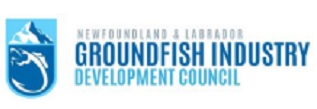 and Labrador Groundfish Industry Development Council (NL-GIDC) believes that the rollover in the allowable harvest for the 2J3KL Cod Stewardship fishery is somewhat disappointing but not surprising. >click to read<
and Labrador Groundfish Industry Development Council (NL-GIDC) believes that the rollover in the allowable harvest for the 2J3KL Cod Stewardship fishery is somewhat disappointing but not surprising. >click to read<
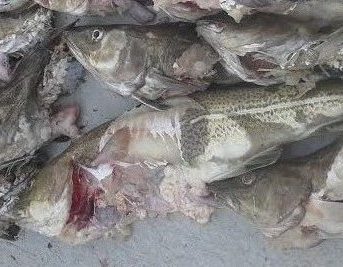
Can New England’s cod fishing industry survive? (How can the scientists and regulators ignore the ever increasing seal predation?!)
Gloucester, Massachusetts, grew up around cod. The waterfront teemed with boats and fishermen, heaps of fish thrashing in wire baskets. Boats were inherited from fathers and shipyards boasted of operating since 1684. As late as the 1980s, the cod were so abundant and large (30-50lb each) that the fishermen still brought in big hauls. Cod remains the state fish of Massachusetts., “We’ve been regulated out of existence,” former Gloucester fisherman Sam Sanfilippo said in 2017. “This used to be the biggest fishing community in the world. Ice companies, wharves, fish dealers, truckers, supermarkets … All through high school, I was always a fisherman. And here I am today: recycler, bike seller, furniture-maker. “I’m 50 years old and I don’t know what the hell I am.” >click to read< 07:30
Canada to ban ‘nuisance seals’ killing to keep access to U.S. market – Canada will abolish permits that allow the killing of “nuisance seals” by commercial fishermen and aquaculture in an effort to maintain access to the lucrative U.S. seafood market, Fishery management failure enacted for fish farmers >click to read<

Cod Cannibalism: With natural prey like capelin and shrimp in decline, cod are eating their young
Stalled. That’s how research scientist Karen Dwyer of the Department of Fisheries and Oceans describes the northern cod stock following this year’s assessment. Ecosystem conditions appear to be the main factor, said Dwyer — especially low stocks of capelin and shrimp. “Both of those prey are very important in driving the population dynamics for cod,” she said. While there’s been an increase in different types of zooplankton, Dwyer said, there’s been a decrease in fatty zooplankton. “There used to be large numbers of large fatty zooplankton, full of fat, which are really good for young fish to eat, young fish such as capelin or even young cod,” she said. “Over time they’ve seen a decline in these large fatty zooplankton.” >click to read< 07:18

2J3KL Cod Scientific Update was recently released. Important information was not included
The Department of Fisheries and Oceans released an update of the scientific assessment for 2J3KL Cod on Friday, April 17, 2020. While the Newfoundland and Labrador Groundfish Industry Development Council appreciates the effort by DFO-Science in completing this update in the face of the Covid-19 pandemic, it appears that some important information was not included in the scientific deliberations. There is an internationally-accepted scientific model that has been used for this stock since 2016. This model provides information on overall stock biomass, fishing mortality, natural mortality and recruitment. All the data required to complete this analysis was available to scientists, but they chose not to run the model for this update. Contact: Jim Baird >click to read< 12:06
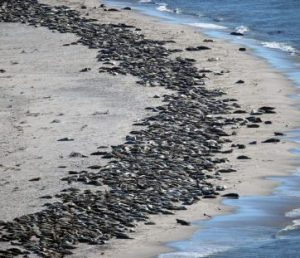
CLF says nothing short of an end to directed fishing – Another cut in cod fishing not enough for environmentalists
Fishing regulators are proposing another cutback to the catch limits for Atlantic cod, but some environmentalists say the move isn’t significant enough to slow the loss of the species. Atlantic cod fishing was once one of the biggest marine industries in New England, but the fishery has deteriorated after years of overfishing and environmental changes. Fishermen caught less than 2 million pounds of the fish in 2017, decades after routinely catching more than 100 million pounds annually in the early 1980s. It was the worst year for the fishery in its history. >click to read< 10:31






